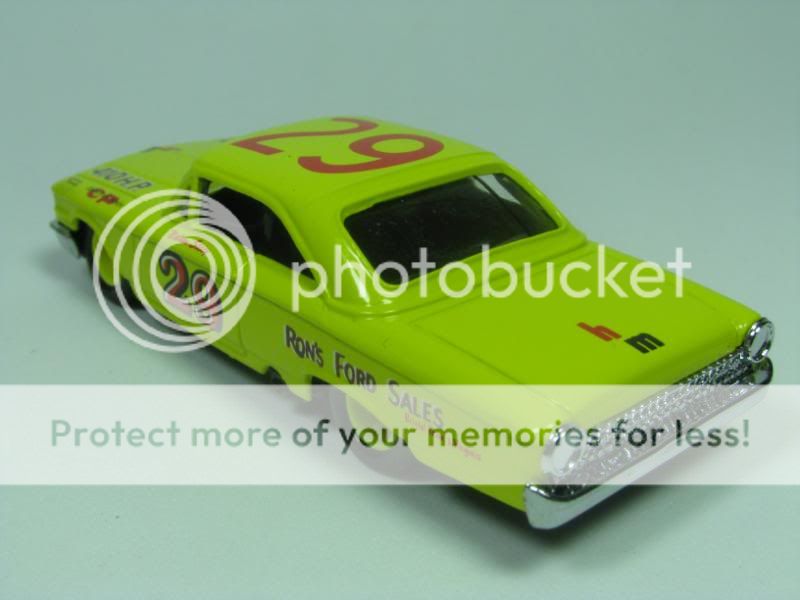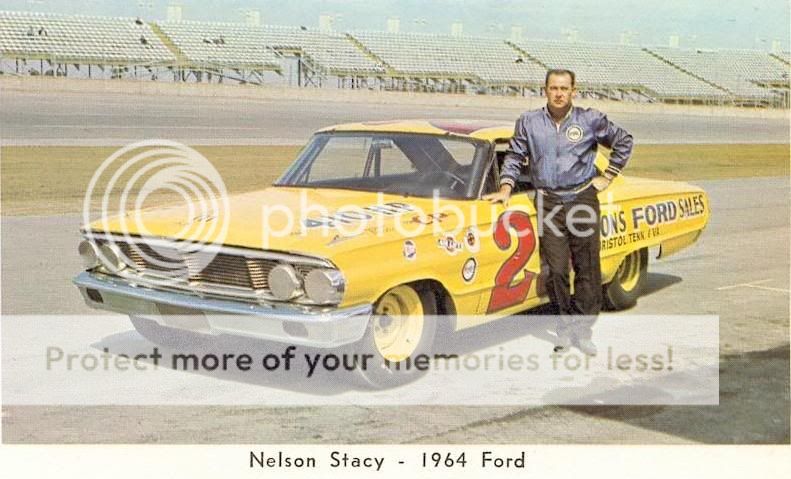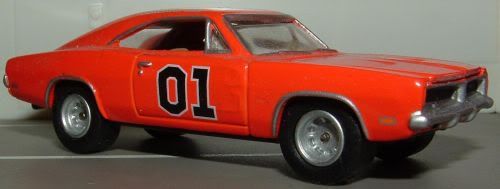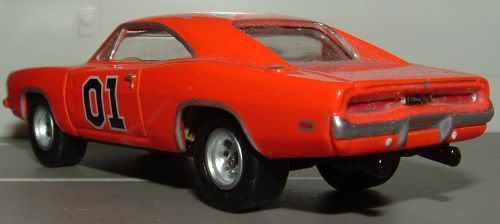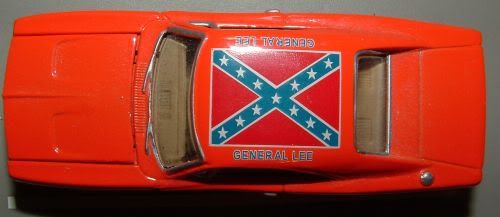Today's car of the day is Johnny Lightning's 1969 Dodge Charger.
The General Lee is the modified Dodge Charger driven by the Duke cousins Bo and Luke in the television series The Dukes of Hazzard. It is known for the chases and stunts, especially high jumps, in almost every episode, and for having the doors welded shut, leaving the Dukes to climb in and out through the windows. The car appears in every episode but one ("Mary Kaye's Baby"). The car's name is a reference to the Confederate General Robert E. Lee, and indeed the vehicle embodies the Southern United States, bearing as it does a Confederate naval jack on its roof and a horn which plays the melody from the first line of the song "Dixie".
The idea for the General Lee was developed from the famous bootlegger Jerry Rushing's car, which was named for Lee's favorite horse, Traveller. Traveller was also the name of the car in Moonrunners, the 1975 movie precursor to The Dukes of Hazzard.
For more information and pictures of the real car please visit:
The General Lee
Perhaps the most iconic television/movie car of all time, it's hard to believe this is the first General Lee we've featured as Car Of The Day.
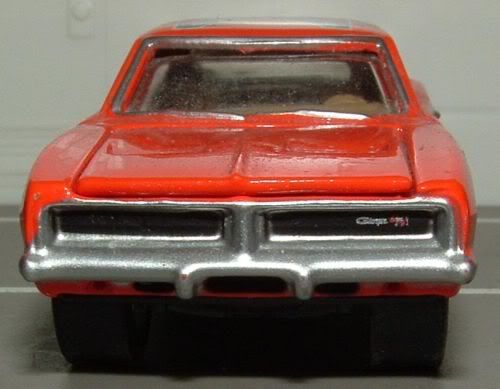
Although the estimated number of General Lees used varies from different sources, according to Ben Jones ("Cooter" in the show), as well as builders involved with the show, 256 General Lees were used to film the series. Others claim about 321 were used in the series. Approximately seventeen still exist in various states of repair. On average, more than one General Lee was used up per show. When filming a jump, anywhere from 500 to 1,000 pounds of sand bags or concrete ballast was placed in the trunk to prevent the car from nosing over. Later in the series the mechanics would raise the front end of the car to keep it from scraping against the ramp causing it to lose speed, thereby providing a cushion for the driver upon landing. Stunt drivers report enjoying the flights but hating the landings. Despite the ballast, the landing attitude of the car was somewhat unpredictable, resulting in moderate to extremely violent forces, depending on how it landed. On many of the jumps the cars bent upon impact. All cars used in large jumps were immediately retired due to structural damage.
From 1979 to 1985, 1968 and 1969 model-year Chargers were sourced and converted to General Lee specifications. Despite popular belief, no 1970 models were used, according to all builders involved over the years. Obtaining cars was not a problem until later years. By that time, the car was the star of the show and Warner Brothers moved building of the cars in house to keep the cars consistent in appearance. Later in the show's run, when it got too hard and/or expensive to continue procuring more Chargers, the producers started using more 'jump footage' from previous episodes. In the final season radio-controlled miniatures were occasionally used to the chagrin of several cast members.
Episodes 1 to 5 were filmed in the Georgia towns of Covington and Conyers in November and December 1978. Georgia episode cars consisted of 6 Dodge Chargers. The first General Lees were built by Warner Brothers (WB) and shipped to Georgia where John Marendi (picture car coordinator) labeled the first 3 cars LEE 1, LEE 2, and LEE 3 in no particular order for film editing purposes. LEE 1 was a 2nd unit car with a full roll cage. It is a 383 V8-powered 1969 Charger equipped with air conditioning (A/C). It was originally code T3 Light Bronze Metallic with tan interior, 3 speaker dash, and chrome rocker trim. After the now-famous jump over Rosco P. Coltrane's police cruiser by stuntman Craig Baxley, it was stripped of its front seats and 1969-specific grill and taillight panel. LEE 1 was used once more as the "Richard Petty" tire test car in the fourth episode Repo Men and afterwards was retired to a junkyard in Georgia, but later bought and restored. LEE 2 was also a 2nd unit car with a full roll cage and tan interior. It was used for the opening scene in One Armed Bandits. In this scene, Bo and Luke were chasing Rosco's police cruiser with the General after Cooter stole it; during this chase, LEE 2 is shown making a jump (the second that Baxley performed). LEE 3 was the first unit 1 close-up car and the first General Lee built by Warner Brothers; it's seen in the first publicity photos. It was originally a F5 Medium Green Metallic R/T SE (Special Edition) model. It was powered by a 440 Magnum V8,375hp(horsepower)3671 lb,and also had A/C with power windows and a wood grain dash. This car had a tan interior and a removable roll bar that allowed installation of a camera for in-car shots. This car was painted 1975 Corvette Flame Red with a special basecoat; the basecoat was used after they found LEE 1's paint appeared to be blotchy due to the direct application over factory paint. Eventually the first 3 General Lees started to show visible damage, so the crew had to start making more. The first General Lee built in Georgia was a 1968 Charger converted to look like a 1969; the tail light panel, front grill, and front seats taken from LEE 1 were used. The paint used on these cars was Chrysler code EV2 or "Hemi Orange". Interiors not originally tan were sprayed with SEM brand "Saddle tan" Vinyl dye. The first 3 Georgia Lees had a set of crossed flags (a Confederate flag and checkered flag) on the panel between the rear window and trunk lid. Although 4 sets were created, only 3 were used. They were discontinued due to the continuity of the General Lee graphics, making it one less thing to be used. The 3 surviving cars went back to California and had the crossed flags removed upon reconditioning. The wheels were generally 14X7 inch American Racing brand "Vectors" throughout the show and were mainly mounted on P235/70R14 B.F. Goodrich Radial T/A tires with the blackwall side facing out.





